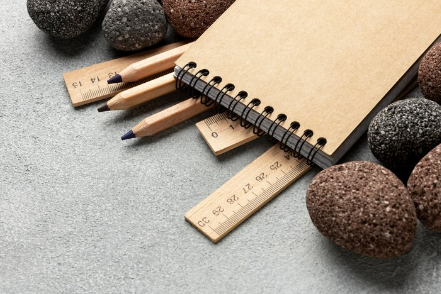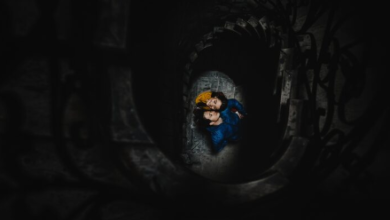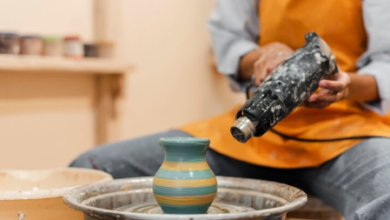Lep Bound: The Ultimate Guide to Premium Handcrafted Bookbinding

In an age dominated by digital screens and mass-produced goods, there remains a profound and enduring allure for objects that are meticulously crafted by hand, items that possess a soul and a tangible connection to human artistry. Among these cherished objects, few hold as much potential for personal legacy as a beautifully bound book, journal, or album. This is the realm where the Lep Bound method distinguishes itself, emerging as a benchmark for excellence in the ancient and revered craft of bookbinding. Lep Bound is not merely a process; it is a philosophy that prioritizes structural integrity, archival quality, and sublime aesthetics in equal measure, resulting in heirloom-quality pieces designed to withstand the passage of time while being a daily joy to use. This ultimate guide will delve into the intricate world of Lep Bound, exploring the historical techniques and modern innovations that define its approach, the superior materials that form the foundation of its durability, and the specific reasons why this binding method has become the preferred choice for artists, writers, archivists, and anyone who values the written word and preserved memory. We will unpack the technical nuances that separate a Lep Bound creation from its commercially produced counterparts and illuminate the journey from raw materials to a finished product that is as functional as it is beautiful.
The Anatomy of Excellence: Deconstructing the Lep Bound Technique and Material Selection
The renowned durability and distinctive feel of a Lep Bound book are the direct result of a deliberate and multi-stage process that eschews shortcuts in favor of time-honored techniques. At the heart of the method often lies a variation of the tight-back or flexible binding structure, which allows the book to open fully and lie flat upon a surface—a critical feature for artists sketching across the gutter of a journal or for writers composing on every inch of the page. This is achieved through a meticulous sewing technique, where signatures of high-quality, acid-free paper are sewn together onto sturdy linen tapes or cords, creating a text block that is fundamentally more robust than one held together by adhesive alone. The sewing not only provides immense strength but also gives the book its characteristic flexible spine, allowing it to move and flex with use without compromising the binding’s integrity. Once the text block is sewn, it is carefully rounded and backed, a process that shapes the spine into a gentle, convex curve that further enhances the book’s strength and helps prevent the spine from collapsing or becoming concave over years of use. This foundational work is what allows a Lep Bound book to endure decades, if not centuries, of referencing and admiration, making it a permanent vessel for thoughts, sketches, and memories.
The commitment to quality extends unequivocally to the materials selected for every component of the book. The cover materials are chosen not only for their visual appeal but for their protective qualities and longevity. This may include full-grain leathers that develop a rich patina over time, durable bookcloth that is resistant to scuffing and moisture, or archival-quality papers for specialty covers. The boards used within the covers are typically dense, acid-free conservation board that will not warp or degrade, providing a rigid and stable protection for the pages within. Even the endpapers—the sheets that connect the text block to the cover—are carefully chosen for both their strength and their decorative contribution, often being marbled papers or heavyweight, color-coordinated sheets that signal the quality within from the very first opening. This holistic approach to material selection, where every element from the sewing thread to the headbands is chosen for its archival stability and functional contribution, ensures that a Lep Bound book is a cohesive and unified object of art and utility. It is this uncompromising attention to the entire ecosystem of the book that transforms it from a simple notebook into a legacy item, an object built to be passed down through generations.
The Practical and Aesthetic Appeal: Why Lep Bound is the Choice for Discerning Users
The superior construction of a Lep Bound book translates directly into a user experience that is palpably different from that of a standard bound volume. For the practicing artist, the ability of the book to lie perfectly flat without the user having to force the spine or hold it down is an invaluable feature; it allows for an uninterrupted workflow and enables the artist to utilize the entire page, including the deep inner margins, for their work without distortion or resistance. Writers and journalers find a profound sense of permanence and seriousness in a Lep Bound journal, which lends gravity to their words and encourages a more thoughtful and intentional practice. The high-quality, often toothy paper stock selected for these books is typically chosen to work beautifully with a wide range of media, from fountain pens and ink to watercolor, pencil, and charcoal, without bleed-through or feathering, making it a versatile tool for any creative endeavor. The tactile pleasure of handling a well-balanced book, the sound of the crisp pages turning, and the sight of a spine that gracefully arcs when opened all contribute to a sensory experience that enhances the act of creation and documentation.
Beyond the studio and the writing desk, Lep Bound albums represent the ultimate solution for preserving cherished photographs and memorabilia. The archival nature of the materials guarantees that precious photographs are protected from the yellowing and degradation caused by acidic papers and unstable adhesives found in common photo albums. The robust binding ensures that as the album is filled and its weight increases, the structure remains sound, protecting a lifetime of memories from physical failure. This makes Lep Bound products a profound gift for marking significant life events—a wedding, the birth of a child, a grand travel adventure—where the content to be preserved is irreplaceable and deserves a vessel of equivalent importance. The aesthetic appeal, which can range from classically elegant to modern and minimalist, ensures that the book is not something to be stored away in a box, but rather displayed proudly on a shelf or coffee table, a beautiful object in its own right that invites interaction and reminiscence. In a world of disposable products, a Lep Bound creation stands as a testament to the enduring power of physical objects to hold our stories, making it a deeply practical and emotionally resonant choice for anyone committed to preserving their work and memories with the highest level of care.
Conclusion
The Lep Bound method represents far more than a niche bookbinding technique; it is a steadfast commitment to preserving the integrity of content through unparalleled craftsmanship and material excellence. In choosing a Lep Bound journal, album, or book, one is investing in an object that has been conceived and constructed to not only last a lifetime but to age gracefully, acquiring character and history with each use. It answers a modern longing for authenticity and substance, offering a tangible counterpoint to the ephemeral nature of digital media. The method’s focus on flexible, lay-flat functionality, archival stability, and timeless design makes it the unequivocal choice for professionals whose work demands the best tools and for individuals who wish to honor their most precious memories with the dignity they deserve. While the initial investment may be greater than that of a mass-market alternative, the value is immeasurable, distributed across every day of use and every year it continues to protect its contents. To choose Lep Bound is to choose legacy over temporariness, quality over quantity, and beauty over mere utility, making it the definitive standard for those who understand that some stories are too important to be entrusted to anything less than the best.
FAQ Section
Q1: What exactly is the “Lep Bound” method?
Lep Bound is a premium bookbinding method that emphasizes handcrafted techniques and archival materials. It typically involves sewing individual paper signatures onto cords or tapes, creating an exceptionally durable and flexible spine that allows the book to lie completely flat when open. This method is a hallmark of quality, focusing on longevity and user experience over cost-effective, mass-production.
Q2: Why are Lep Bound journals more expensive than regular notebooks?
The higher cost is a direct reflection of the materials and labor involved. Lep Bound books use archival, acid-free papers, durable cover materials like full-grain leather or conservation-grade bookcloth, and dense board. More importantly, the binding process is largely done by hand and is significantly more time-consuming than the mechanical gluing and stapling used in commercial binding, resulting in a product that is built to last for generations.
Q3: Are Lep Bound books suitable for use with wet media like watercolor?
Yes, absolutely. One of the key advantages of Lep Bound books is the careful selection of paper stock. Many are specifically designed with thick, textured paper that can handle wet media without bleeding, buckling, or warping. The lay-flat binding is particularly beneficial for artists, as it allows them to work across the entire page seamlessly.
Q4: Can I get a custom-made Lep Bound book?
Most artisans or services specializing in the Lep Bound method offer customizations. This can include selecting the paper type (e.g., watercolor, sketch, lined, blank), choosing the cover material and color, determining the size and page count, and adding personalization such as names, dates, or titles embossed on the cover. This makes them ideal for bespoke gifts and specific professional needs.
Q5: How do I care for my Lep Bound journal or album?
Caring for a Lep Bound book is straightforward. Keep it in a cool, dry environment away from direct sunlight to prevent the cover from fading and the paper from degrading. If the cover is leather, occasional conditioning with an appropriate leather cream can help maintain its suppleness. The robust construction means it requires no special handling beyond the general care given to any valued possession.



